| Year-round Resident | |
| Has Nested near Park |
Sharp-shinned Hawk
Accipiter striatus
| Winter Resident |
Spring: Cooper's Hawks are year-round residents in the Washington metro area, and they have bred in the neighborhood around Monticello Park. Sharp-shinned Hawks are winter residents in the Washington area, and they leave in the spring to go to their breeding grounds in the northern United States, Canada, and the Appalachian Mountains. Both species are seen during the spring at Monticello, with the Cooper's being much more common.
Fall: Sharp-shinned Hawks are very uncommon at Monticello during the fall; in most years, either one or none are seen. Cooper's Hawks can be seen throughout the fall.
Where to See Them in the Park

Of the two species, you are more likely to see a Cooper's Hawk at Monticello, but neither is so common during the spring that you are likely to see one on any given day. Having either of them in the park is not good news for people hoping to see migrating songbirds. Both are bird-killing hawks in the genus Accipiter. When an Accipiter is around, most songbirds hunker down and stop vocalizing to try to avoid detection. Monticello will occasionally have a "Cooper's Hawk shutdown", when activity is low because of the presence of a Cooper's Hawk. Accipiters can be perched anywhere in the park, waiting to attack.
Physical Descriptions
Accipiters have a long tail and short, rounded wings. When high in the sky, their characteristic flight is flap-flap-soar. Buteos, such as Red-tailed and Red-shouldered Hawks, tend not to flap their wings as much when soaring, and they have longer, broader wings and shorter tails. Accipiters are built for speed and maneuverability in flight, and they often dart quickly among tree branches to catch birds.
Distinguishing a Cooper's from a Sharp-shinned Hawk can be difficult. The two species have similar plumage. Female hawks are larger than male hawks, and the male Cooper's is about the same size as a female Sharp-shinned. The male Cooper's is also in the size range of the birds that the female Cooper's hunts and kills. A female Cooper's looks big (almost as large as a crow), and a male Sharp-shinned looks small (about the size of a robin), but a lot of the intermediate-sized birds pose identification challenges. Cooper's and Sharp-shinned Hawks have a few characteristics and fieldmarks that differ, but usually not in a way that is unmistakable to someone not skilled in telling the two species apart. The Cornell Lab's Project Feeder Watch has a page on its website explaining the differences between the two species.
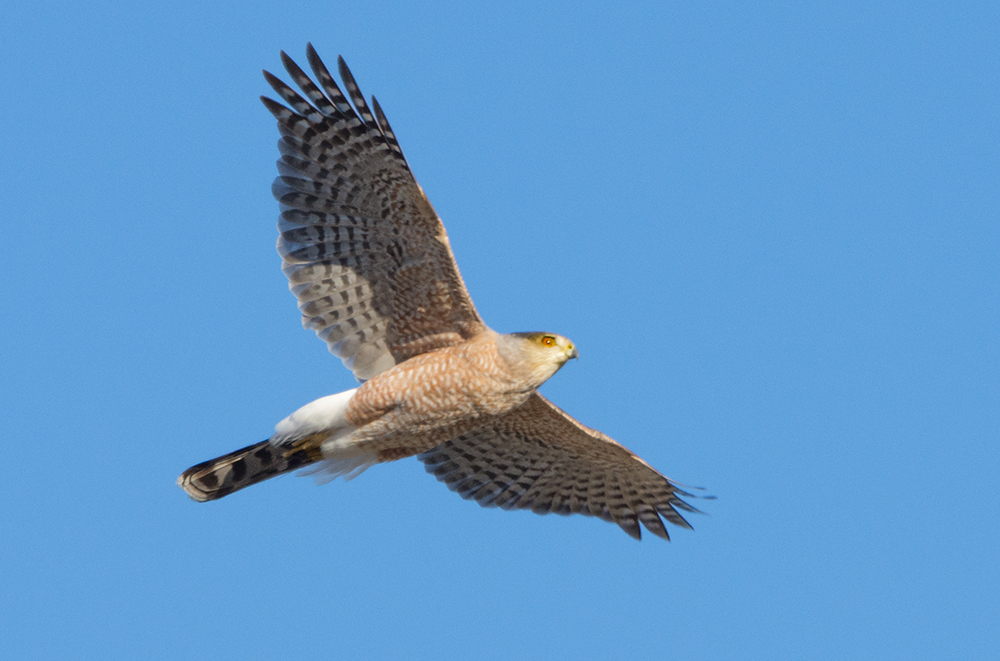
Adults of both species have a blue-gray back and barred rufous underparts. The adult Cooper's has a large head that sticks out in front of its wings. The legs look heavy, and the tail can look long and curved at the tip.
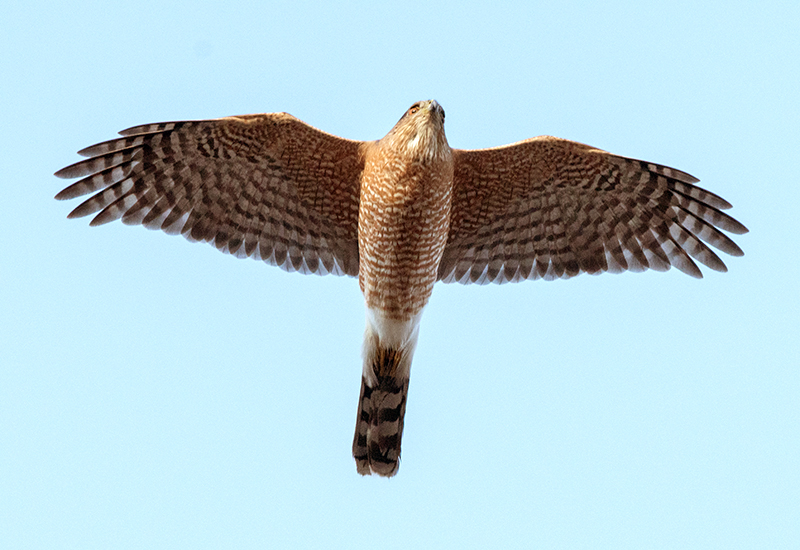
Sharp-shinned Hawks have a smaller head, and their legs are smaller and thinner. Their tail looks shorter and has a less curved tip.
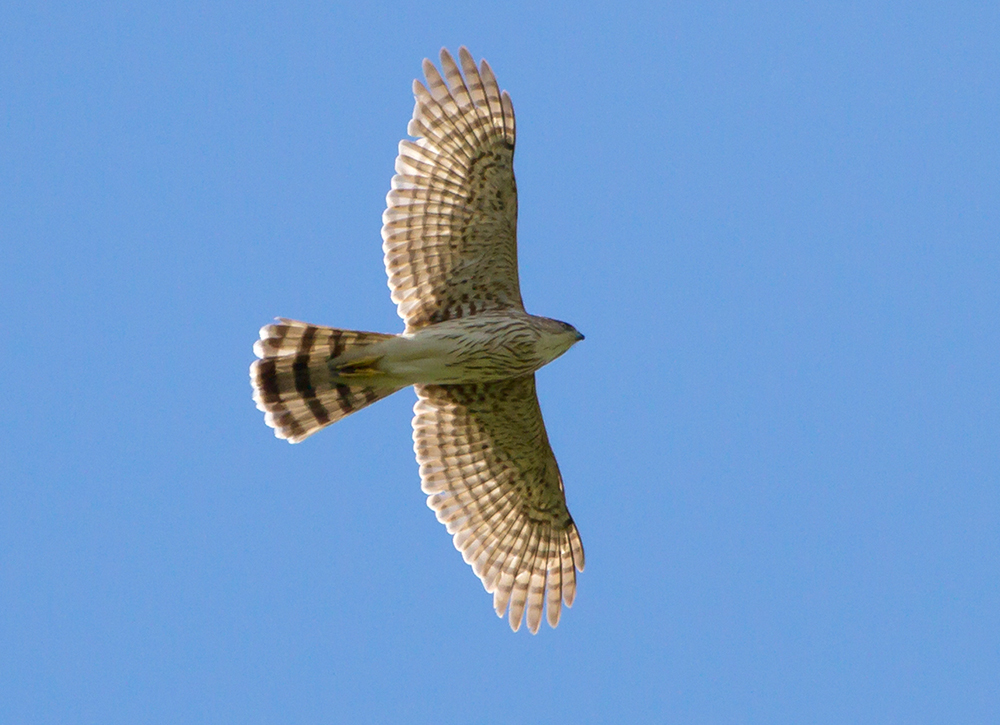
One way to remember the tail shape is that C stands for Cooper's and curved, while S stands for Sharp-shinned and straight. However, tail shape is not a reliable fieldmark. If the tail is folded, you cannot see whether it is straight or curved. The tip of the tail of a Cooper's tends to have more white than the tip of the tail of a Sharp-shinned, but this can be difficult to see in the field.
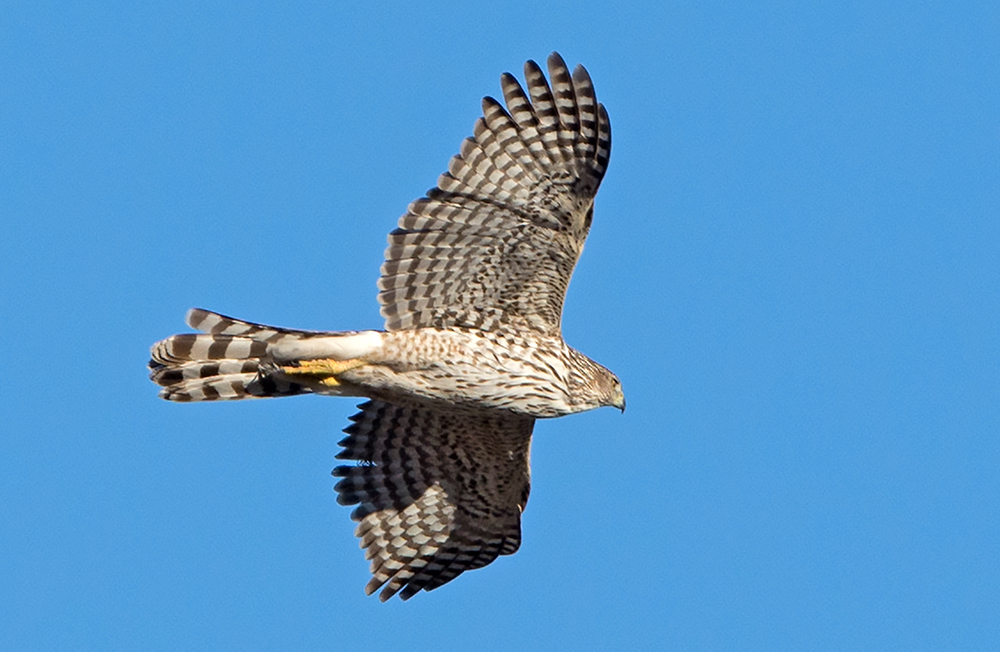
The streaking on the underside of a juvenile Cooper's is fairly sparse. The streaking on the underside of a juvenile Sharp-shinned is heavier.
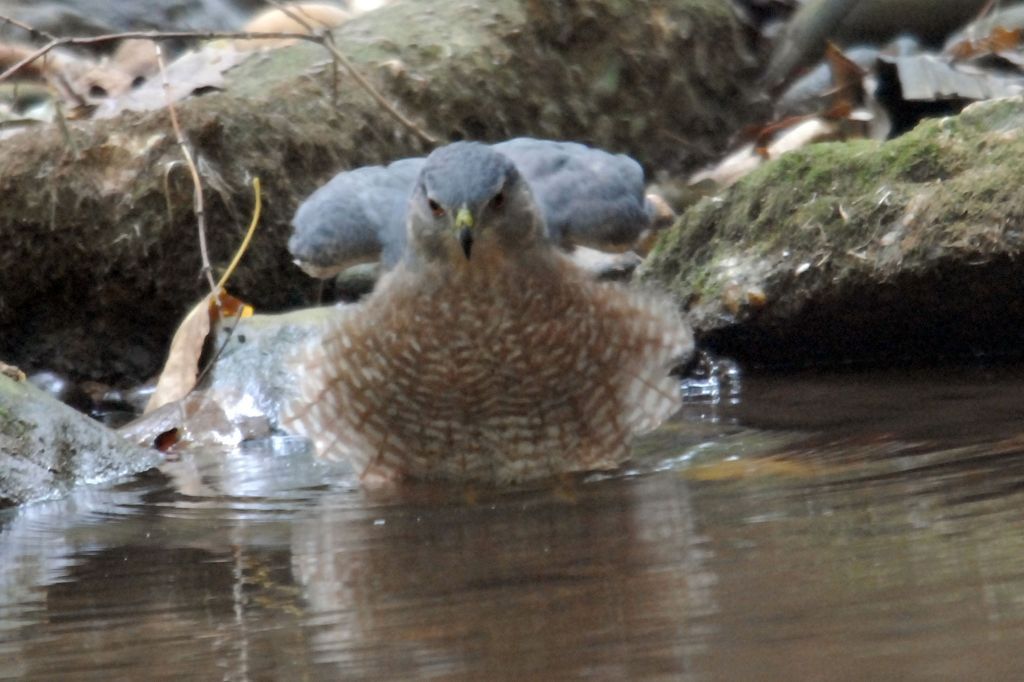
Here is video of a juvenile Cooper's Hawk who had caught an Eastern Chipmink on the Kust property.
Cooper's Hawks sometimes go into the stream at Monticello to drink and bathe. They usually have the stream to themselves, because few birds want to be in the stream with them.
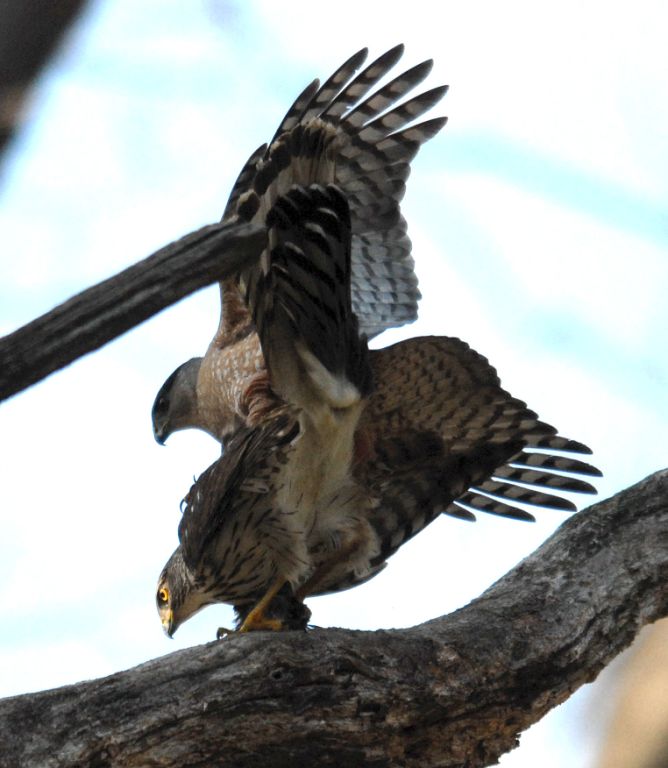
On occasion, Cooper's Hawks have mated near the park. You can see that the male on top is smaller than the female.
Vocalizations
Accipiters use stealth to catch their prey, so you seldom hear them vocalizing at Monticello. They vocalize much more on their breeding territory. You sometimes can hear the call of Cooper's Hawks when they are breeding near Monticello — it is a long and loud series of notes that sound like kek-kek-kek-kek-kek-kek.... The Sharp-shinned has a similar call that is weaker and higher-pitched.
Hear the calls of the Cooper's Hawk.
Hear the calls of the Sharp-shinned Hawk.
Notes
Many Accipiters have adjusted to changes in habitat caused by urbanization and suburbanization. A century ago, Cooper's Hawks had a reputation for killing poultry on farms, and many farmers used to shoot them on sight. Cooper's Hawks now spend a lot of time in suburban yards, regarding bird feeders as all-you-can-eat buffets. Sharp-shinned Hawks also like to lurk near suburban bird feeders. The name of the Sharp-shinned Hawk is inaccurate. On a bird, the tarsus is the bone just above the toes, and the name of the Sharp-shinned Hawk is based on the raised ridge the species has on this bone. From the bottom up, the first joint on a bird's leg is the ankle, which bends backward like a human ankle. A bird's knee is higher up; it bends forward like a human knee and is usually covered with feathers. The sharp shin on the tarsus appears to be on a place equivalent to a human shin above the ankle joint. The ridge is actually below the ankle of the hawk.
Origin of Names
Common Names: Cooper's after American zoologist William Cooper. Sharp-shinned from the raised ridge on the front of the bird's tarsus. Hawk from an Anglo-Saxon word that means seize.
Genus Name: Accipiter means hawk.
Species Names: Cooperii after William Cooper. Striatus means striped, from the streaked underside.
Cooper's Hawk video footage
Sharp-shinned Hawk video footage
Return to the Index
